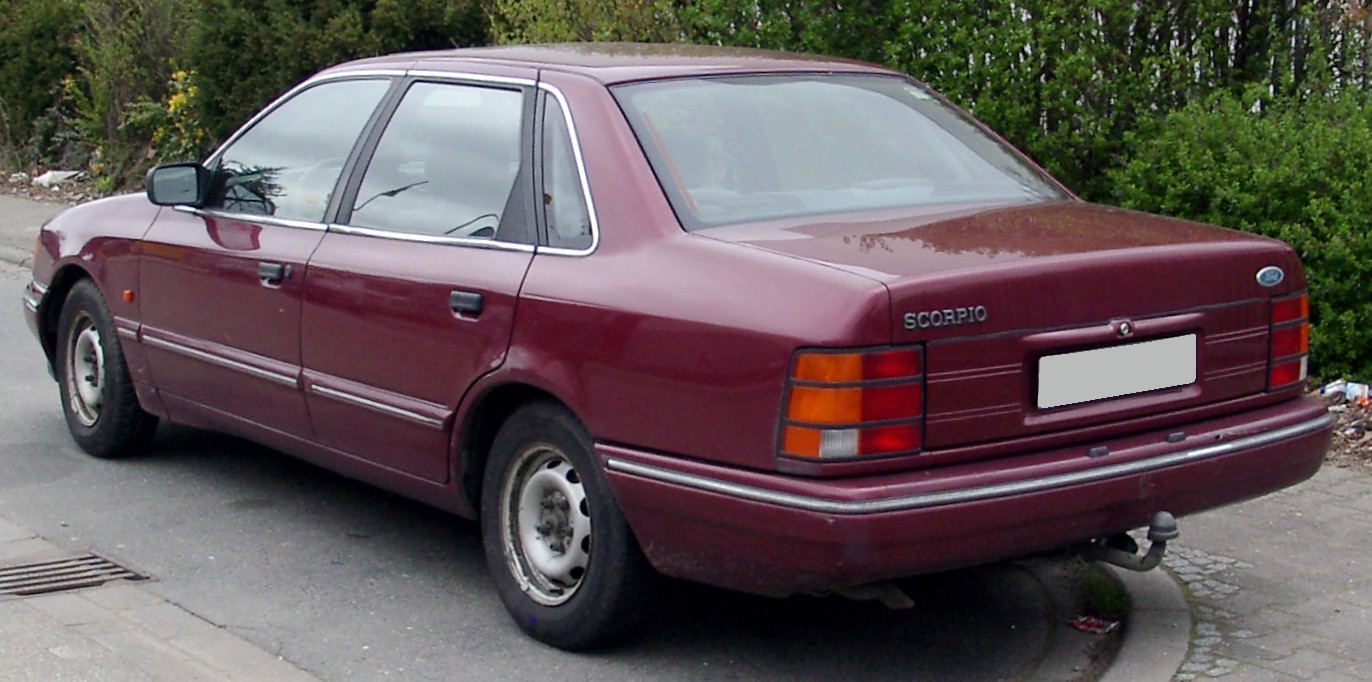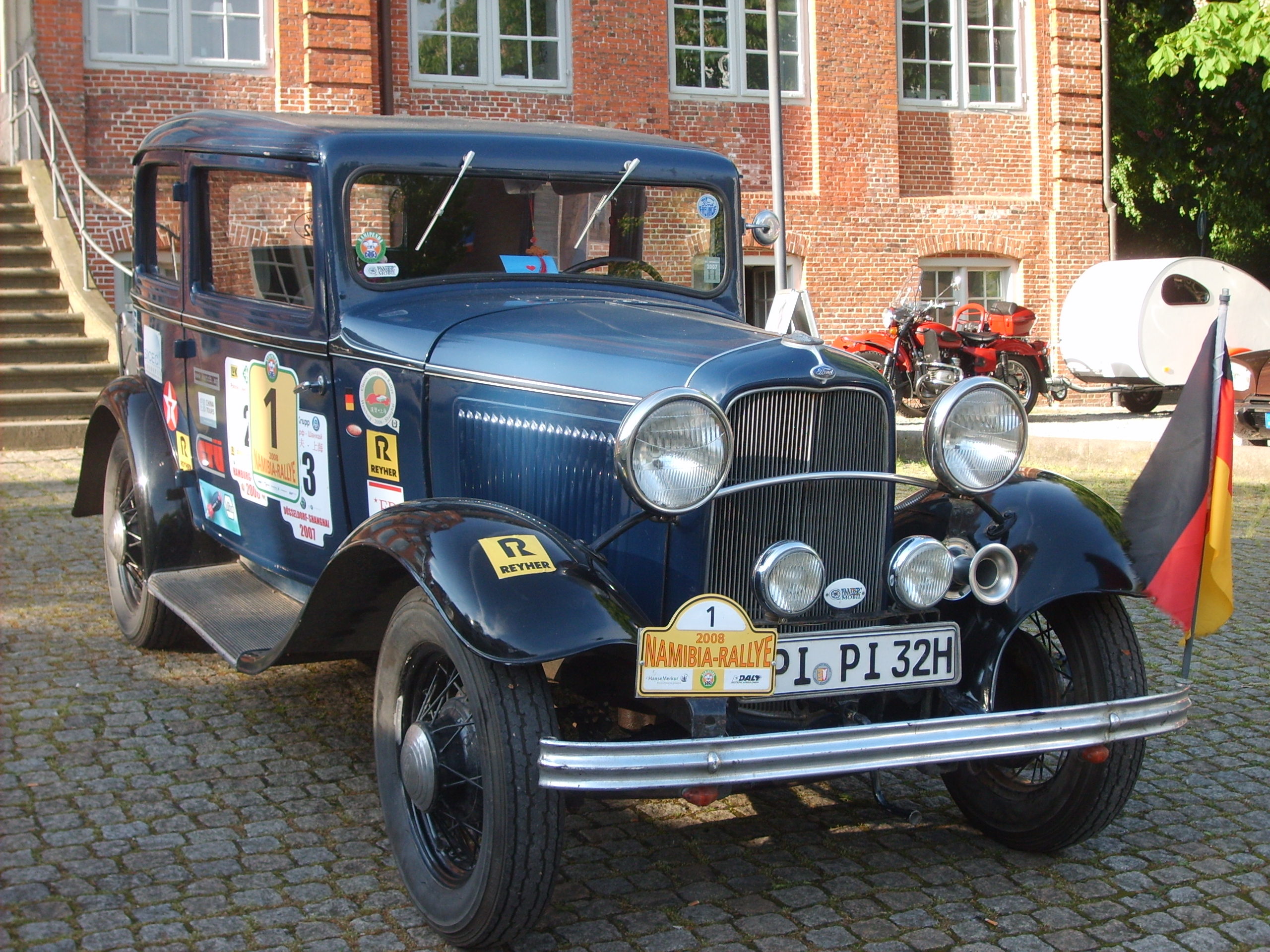|
Merkur
Merkur (, '' Mercury'') is a defunct automobile brand that was marketed by the Lincoln- Mercury division of Ford Motor Company from 1985 to 1989. Drawing its name from the German word for Mercury, Merkur was targeted at buyers of European executive cars in North America, selling captive imports produced by the German division of Ford of Europe. Following the 1989 model year, Lincoln-Mercury withdrew Merkur, making it one of the shortest-lived automotive brands in the modern American automotive industry, lasting only one model year longer than Ford's earlier, more prominent failure, the Edsel. Background During the late 1970s and early 1980s in the United States and Canada, buyer preferences in the luxury-vehicle segment began shifting from once traditional Cadillac, Lincoln and Chrysler models towards more European-produced and inspired vehicles. As a response, the Japanese automotive industry launched luxury-oriented brands developed for North America, with Honda's Acura b ... [...More Info...] [...Related Items...] OR: [Wikipedia] [Google] [Baidu] |
Merkur XR4Ti
The Merkur XR4Ti is a performance-oriented 3-door hatchback sold in North America from 1985 to 1989. A product of the Ford Motor Company, the car was a version of the European Ford Sierra adapted to U.S. regulations. The XR4Ti project was championed by Ford vice president Bob Lutz. History The Sierra was the successor to Ford of Europe's Cortina/Taunus and was developed while Lutz was chairman of Ford's European operations. Due to financial restrictions the decision was made to keep the front-engine, rear-wheel-drive layout of its predecessor and pursue improved fuel economy through advanced aerodynamics. The Probe III design study unveiled at the 1981 Frankfurt Motor Show indicated the direction Ford would take with the Sierra. Responsibility for the Sierra design was handled by vice president for design Uwe Bahnsen and chief stylist Patrick le Quément. The Sierra was released in Europe in September 1982, and the performance-oriented XR4i appeared in 1983, slotted into the l ... [...More Info...] [...Related Items...] OR: [Wikipedia] [Google] [Baidu] |
Merkur Scorpio 2
Merkur (, ''Mercury'') is a defunct automobile brand that was marketed by the Lincoln-Mercury division of Ford Motor Company from 1985 to 1989. Drawing its name from the German word for Mercury, Merkur was targeted at buyers of European executive cars in North America, selling captive imports produced by the German division of Ford of Europe. Following the 1989 model year, Lincoln-Mercury withdrew Merkur, making it one of the shortest-lived automotive brands in the modern American automotive industry, lasting only one model year longer than Ford's earlier, more prominent failure, the Edsel. Background During the late 1970s and early 1980s in the United States and Canada, buyer preferences in the luxury-vehicle segment began shifting from once traditional Cadillac, Lincoln and Chrysler models towards more European-produced and inspired vehicles. As a response, the Japanese automotive industry launched luxury-oriented brands developed for North America, with Honda's Acura bra ... [...More Info...] [...Related Items...] OR: [Wikipedia] [Google] [Baidu] |
Merkur Scorpio
The Merkur Scorpio is a mid-size luxury car that was marketed by the Lincoln-Mercury division of Ford for the 1988 and 1989 model years through its Merkur sub-brand. Slotted above the Merkur XR4Ti in the model line, the Scorpio served as the flagship of Merkur. A captive import from Ford of Europe, selected Lincoln-Mercury dealers marketed the Scorpio in the United States and Canada. A near-direct counterpart of the Ford Scorpio Mk I ( Ford Granada Mk III in the United Kingdom), the Merkur Scorpio was developed to give Lincoln-Mercury a competitor against European executive cars sold in North America, including the Audi 100, BMW 5-series, Mercedes-Benz 190E, Saab 9000, Sterling 827, and Volvo 740/760. Following the 1989 model year, Ford ended imports of the Scorpio, closing down the Merkur brand. Lasting only for two model years, the Merkur Scorpio is among the shortest-lived Ford Motor Company nameplates in modern history. Along with unstable pricing due to fluctuating exch ... [...More Info...] [...Related Items...] OR: [Wikipedia] [Google] [Baidu] |
Mercury (automobile)
Mercury is a defunct division (business), division of the American automobile manufacturer Ford Motor Company. Created in 1938 by Edsel Ford, Mercury served as the medium-price brand of Ford for nearly its entire existence, bridging the price gap between the Ford and Lincoln Motor Company, Lincoln model lines. Competing against Buick and Oldsmobile from General Motors for decades, the brand also competed against Chrysler, Chrysler's namesake brand (following the closure of DeSoto (automobile), DeSoto). From 1945 until its closure, Mercury formed half of the Lincoln-Mercury Division of Ford, which served as a combined sales network (distinct from Ford) for its two premium automotive brands. Lincoln-Mercury also served as the sales network for Continental (1956–1960), Edsel (1958–1960) and Merkur (1985–1989). Through the use of platform sharing and manufacturing commonality, Mercury vehicles shared components and engineering with Ford or Lincoln (or both concurrently) ... [...More Info...] [...Related Items...] OR: [Wikipedia] [Google] [Baidu] |
Ford Sierra
The Ford Sierra is a mid-size car or large family car manufactured and marketed by Ford Europe from 1982-1993, designed by Uwe Bahnsen, Robert Lutz and Patrick le Quément — and noted for its aerodynamic styling producing a drag coefficient of 0.34, a significant improvement over its predecessors. The Sierra debuted at the 1982 British International Motor Show in Birmingham,Ford Sierra '''', 6 November 2007 shortly followed by the 1982 Paris Salon de l'Automobile.Salon de l'auto '' [...More Info...] [...Related Items...] OR: [Wikipedia] [Google] [Baidu] |
Ford Scorpio
The Ford Scorpio is an executive car that was produced by Ford Europe from 1985 to 1998. It was the replacement for the European Ford Granada line (although in the UK and Ireland the Scorpio was marketed under the Granada name until 1994). Like its predecessor, the Scorpio was targeted at the executive car market. A variant known as the Merkur Scorpio was sold briefly on the North American market during the late 1980s. First generation (1985–1994) Codenamed ''DE-1'' during its development (since it was intended to straddle the European D and E segments), the Scorpio was heavily based on the Sierra, sitting on a stretched version of its floorpan, and using a similar styling philosophy set by both the Sierra and the third generation Escort. Under the bonnet were well proven engines, starting with the venerable Pinto engine unit in 1.8 L and 2.0 L capacities, as well as the V6 Cologne engine in 2.4 L, 2.8 L, and later 2.9 L displacements. By ... [...More Info...] [...Related Items...] OR: [Wikipedia] [Google] [Baidu] |
Captive Import
Captive import is a marketing term and a strategy for a vehicle that is foreign-built and sold under the name of an importer or by a domestic automaker through its own dealer distribution system. The foreign vehicle may be produced by a subsidiary of the same company, be a joint venture with another firm, or acquired under license from a completely separate entity. The brand name used may be that of the domestic company, the foreign builder, or an unrelated marque entirely (this is one type of "badge engineering"). Background Captive import arrangements are usually made to increase the competitiveness of the domestic brand by filling a perceived target market not currently served by its model lineup, that is either not practical or not economically feasible to fill from domestic production or a mutually beneficial agreement that helps automakers without a strong distribution network or a presence in a certain country to benefit from the distribution network and stronger brand imag ... [...More Info...] [...Related Items...] OR: [Wikipedia] [Google] [Baidu] |
Karmann
Wilhelm Karmann GmbH, commonly known as simply Karmann, was a German automobile manufacturer and contract manufacturer based in Osnabrück. Founded by Wilhelm Karmann in 1901, the company specialized in a variety of automotive roles, including design, production and assembly of components for a wide variety of automobile manufacturers, including Chrysler, Porsche, Mercedes-Benz and Volkswagen Group. The company was broken up in 2010, after filing for bankruptcy the previous year. Its convertible roof components were purchased by Webasto, Magna Steyr, and Valmet Automotive— while the Osnabrück assembly plant, vehicle development, tools, and assembly systems were transferred to Volkswagen. History Karmann was established in 1901 when Wilhelm Karmann purchased Klages, a coachbuilder founded in 1874, and renamed the business. The company then grew together with the expanding automobile industry. Karmann became known for its work on convertibles, coupés, and other niche model ... [...More Info...] [...Related Items...] OR: [Wikipedia] [Google] [Baidu] |
Ford Motor Company
Ford Motor Company (commonly known as Ford) is an American multinational automobile manufacturer headquartered in Dearborn, Michigan, United States. It was founded by Henry Ford and incorporated on June 16, 1903. The company sells automobiles and commercial vehicles under the Ford brand, and luxury cars under its Lincoln luxury brand. Ford also owns Brazilian SUV manufacturer Troller, an 8% stake in Aston Martin of the United Kingdom and a 32% stake in China's Jiangling Motors. It also has joint ventures in China (Changan Ford), Taiwan (Ford Lio Ho), Thailand ( AutoAlliance Thailand), and Turkey ( Ford Otosan). The company is listed on the New York Stock Exchange and is controlled by the Ford family; they have minority ownership but the majority of the voting power. Ford introduced methods for large-scale manufacturing of cars and large-scale management of an industrial workforce using elaborately engineered manufacturing sequences typified by moving assembly lines; by ... [...More Info...] [...Related Items...] OR: [Wikipedia] [Google] [Baidu] |
Ford Germany
Ford-Werke GmbH is a German car manufacturer headquartered in Niehl, Cologne, North Rhine-Westphalia. It is a subsidiary of Ford Motor Company, which operates two large manufacturing facilities in Germany, a plant in Cologne and a plant in Saarlouis. Berlin origins The earliest presence of the Ford Motor Company in Germany was a parts operation set up in Hamburg in 1912. At the end of 1924 the US Ford Motor Company established a sales office in Berlin which at the start of 1925 received a permit to import 1,000 tractors. In 1920 the government had imposed a tariff so high that it amounted to a prohibition against importing foreign automobiles, but this was reversed in October 1925. The move had evidently been anticipated by Ford, since on 18 August 1925 the ''Ford Motor Company Aktiengesellschaft'' had been entered in the Berlin Companies Register.Oswald, p 411 During 1925 an assembly plant was constructed in a rented warehouse in the Westhafen (western port) district of ... [...More Info...] [...Related Items...] OR: [Wikipedia] [Google] [Baidu] |
Ford Mustang (third Generation)
The third-generation Mustang was produced by Ford from 1979 until 1993. Built on Ford’s Fox platform, it is commonly referred to as the Fox body Mustang. It evolved through several sub-models, trim levels, and drivetrain combinations during its production life. It underwent updates for the 1987 model year and seemed destined for replacement with a front-wheel drive Mazda platform. However, company executives were swayed by consumer opinion and the rear-wheel drive Mustang stayed, while the front-wheel drive version was renamed the Ford Probe. Enthusiasts group the generation into two segments: the 1979–1986 cars, with their quad headlight arrangement, and the 1987–1993 cars, with their aerodynamic composite headlamps and front fascia styling. Production ended with the introduction of the fourth-generation Mustang (SN-95) for the 1994 model year. 1979–1982 The 1979 model year Mustang was based on the Fox platform. This chassis was "Ford's initiative to build a one-s ... [...More Info...] [...Related Items...] OR: [Wikipedia] [Google] [Baidu] |

.jpg)
.jpg)




